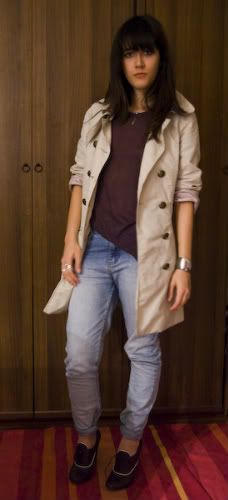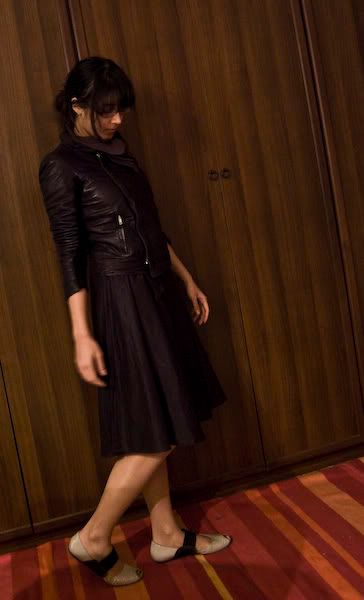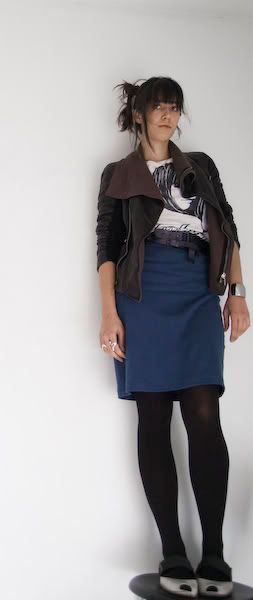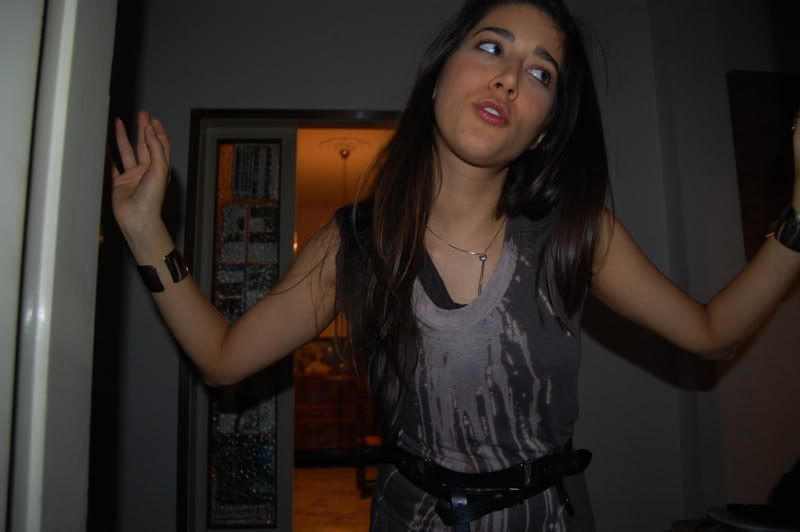
excuse the insane expression please!
and here's a more serious shot... I love how the wall matches the shirt... it was totally unintentional and I love how it turned out.
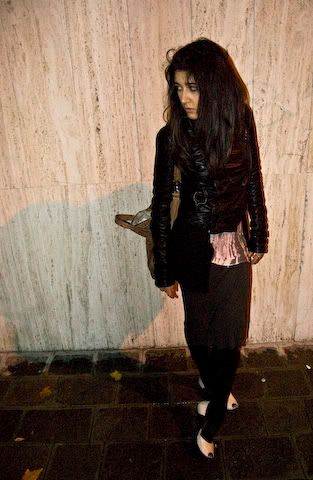





I mean, can you really absorb enough information from a 15 minute runway presentation to know if a designer has done the big job or is merely show-boating? And then what becomes of that visual impression when it's bombarded with successive images that are unrelated? Does it pound everything into a kind of mental mush that absolves us of needing to care or feel about anything?
My friend and whirling colleague Amy Spindler, the style editor of The New York Times Magazine, will often say, as she is exiting a plainly bad show, 'The runway never lies!'. To her, and perhaps to most of us who look at clothes for a living, you can tell rather quickly if a designer has something new or worthwhile to say. But I've been wrong. I've been hoodwinked by collections that seemed ingenious (Romeo Gigli's Paris show in the early 90's when he draped his clothes with Murano glass) and dismissive of others that in retrospect were actually speaking to our democratic times (the last show of Miguel Adrover before his dopey backers pulled the plug).
In fact, the modern runway is a lie It has allowed very average designers with a powerful, tabloid sense of communication to be percieved as great talents. It plays tricks on your senses - senses, of course, that have been radically altered by a culture that demands sound bytes and seems to be in constant fear of boredom. I don't blame someone like Tom Ford for knowing how to seduce people with his fashion shows - the always dark room, the music and atmosphere always reminiscent of another, freer time in fashion. He is as agile as he is succinct. But I suppose I blame the audiences for not looking deeper, and for not expecting more.
I don't have a great yen for the past, but I have plenty of curiosity, and I've often wondered what it would have been like to go to a Balenciaga show and sit there through 200 passages as Diana Vreeland and Carmel Snow smoked in the front row. And what did it sound like when Carmel, alone among the editors, clapped at the show that signalled Chanel's return? The salon, the silence, the rapt attention of the audience - this is not a wish for the good-old days. But think about what it must have meant to sit there and absorb clothes at eye leve. Balenciaga wasn't just interested in putting across looks that spanned the day of his clients: he was also determined to reveal the intimacies of a craft. And I am reminded, too, that at one of the lowest points in Yves Saint Laurent's life, in 1976, he produced one of his most exhilirating collections: a ready-to-wear show, based on Carmen, that had 300 looks and ran for three hours.
"You can't believe how exciting that show was,' THadee Klossowski, who is married to Loulou de la Falaise, told me. 'I watched it twice.' At the end of one of Saint Laurent's last couture shows, with some 90-some looks, I remember an American editor saying as she stood to leave, 'God, he should be paying us to sit through that.' Time, and the spontaneity of visual communication, is what has made fashion seem irrelevant.
I have, like many people, a ready suspicion that most of what we see on the television news is only half the truth, or at least half the story. (The one obvious exception is Spet. 11, when the media, and hundreds of amateur photographers, reported the events as they were happening before everyone's eyes, in real time.) We expect the news to come at us immediately - that's what the media brightly promises, after all - but the meaning of those events dissipates as quickly as a summer rain. And then it's on to the next injustice or report of catastrophe. What this creates, it seems to me, is an illusion of involvement, even empathy, without the need to react. It's your surface involvement that sustains you, maybe because you sense that the real story is too complicated, and too horrific, to try to fathom.
We heard a lot in the 90's, as designers bandied about words like 'marketing' and 'branding', that fashion was about surface. It was supposed to be fun and quick and - deeply? - of the moment. At the same time, designers took on more - more collections, more roles, and this elaborate plate spinning was supposed to impress the public. You also got the idea, a rather cynical one, that nothing was meant to last in the new fashion era, and therefore you weren't expected to judge anything to harshly.
What we've found out, of course, is that most designers don't have the mental agility (or the discipline) of someone like Karl Lagerfeld to do more than one thing well. And what was wrong, anyway, with doing one thing exceptionally well? It's been said, almost as a defense for the lack of imagination and integrity, that younger designers sample the 70's and 80's because they belong to the postmodern age. And how often have journalists airily employed the word 'referencing' to describe what, in another era, would be called copying? But the trouble with referencing or postmodernism (as it's lightly understood these days) is that it discourages people from doing the real mental work that every creative process entails.
Strange as it must seem, the people I admire in fashion are those who have in a way dropped out, or who insist on doing things with a kind of quiet rigor - Azzedine Alaia, Martin Margiela, Yohji Yamamoto, and Jean Paul Gaultier, who, though hardly quiet, has managed to extract more from his aesthetic since going into haute couture. Experience now rules - and what is experience but the slow evolution of time and understanding?
Earlier this year, I came out of the tunnel of working with Bill Blass on his memoir, Bare Blass, and I wondered if I had spent too much time absorbed in one man's past to recognize what was happening today. The New York fall collections had just commenced, and as I went around to the shows, looking at some of the new designers whom people were cooing about, I thought 'Am I just not seeing what all the fuss is about?'. To me, this new talent seemed so marginal against the life of Blass, whose career began in the late 40's in the back rooms of Seventh Avenue and took years, years, to really develop.
But I realized my reaction to the runways was based on something more, something personal. Because in the process of shifting from newspaper deadline writing to book writing, I had learned what it means to truly understand a subject. I had to slow down, go more deeply through the layers, and give everything a perspective longer than six months. It is someone you need in this business more than ever.
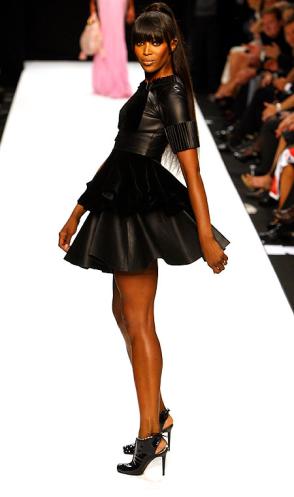



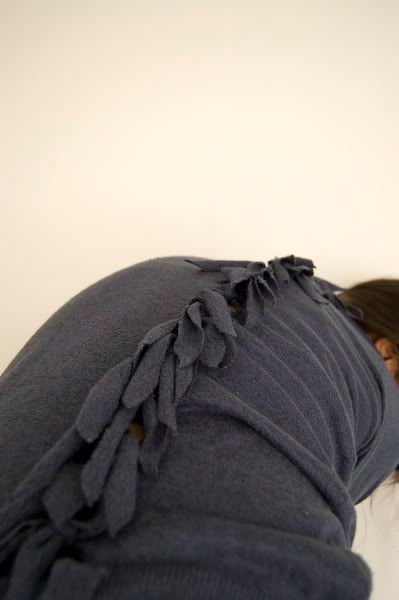
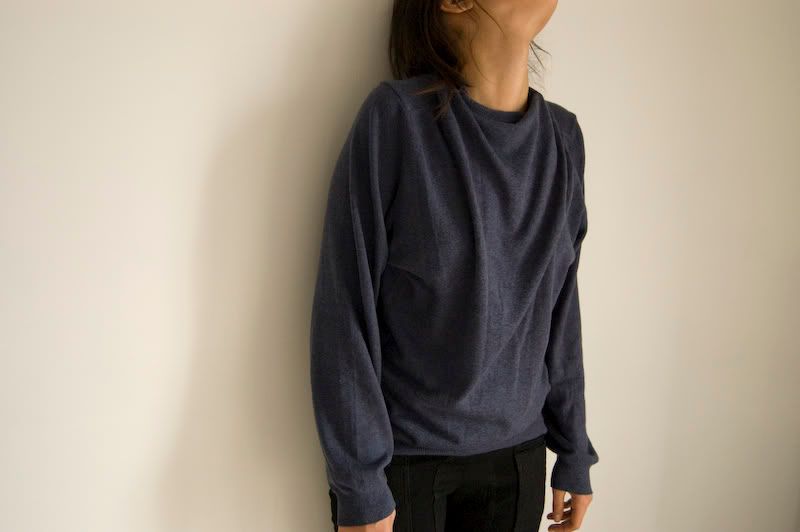
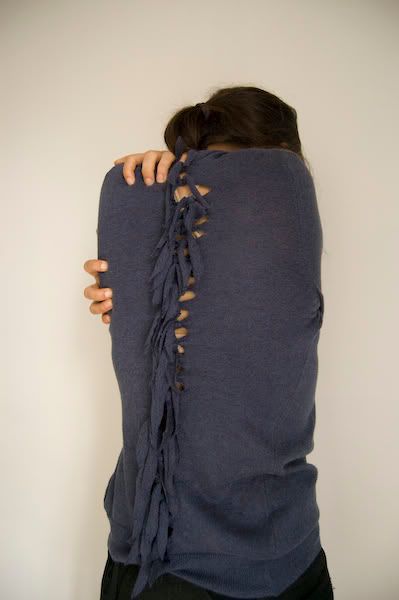


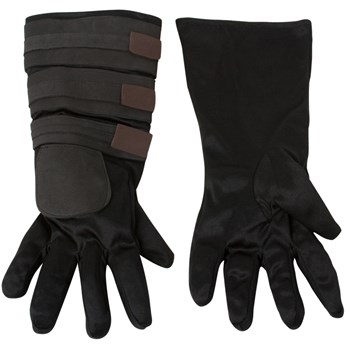


















style.com
PARIS, October 1, 2008
By Nicole Phelps
Thank goodness for Sonia Rykiel. The Paris legend resuscitated what was becoming a bleak season (blame the markets) with a 40th-anniversary dinner-and-show party that goes down in this reporter's notebook as the most spontaneously exuberant and genuinely fun fashion event in recent history. After a long trek to Saint Cloud and an even longer wait for the entrée, it felt like the night was going to turn into a chore. But by the time three models vamped their way down the elevated runway in metallic silver-and-black striped sweaters and skirts (specifically, that would be somewhere between the opening run of house-signature candy-colored tops and the pearl-embroidered oversize suits and motorcycle jackets), any lingering resentment about the late 11 p.m. start had evaporated.
During the evening-gown section—long tanks and feathery halters and tiers ruffled to the floor—the guests at Olivier Theyskens' table started tossing roses from the centerpiece at the models. (Other luminaries on hand included Jean Paul Gaultier, Zoe Cassavetes, Emma Watson, and Dita Von Teese.) Soon the runway was covered in flowers the color of Rykiel's dresses. Even that couldn't stop the girls from breaking into a dance party when they came out again in taffeta minidresses. A few even conga-lined it straight into the audience.
If that had been it, the audience would've left content. But after taking her bow alongside her mother, Sonia's daughter Nathalie grabbed the microphone and announced, "A birthday without a surprise isn't a birthday. You've been inspiring the world of fashion for 40 years; here's your present. Bon anniversaire, Maman." Out came 30 more models in Sonia Rykiel looks designed by some of fashion's biggest names. Martin Margiela made a fur chubby the color of Rykiel's flame-red mane. Rodarte's sweater dress read "Obama." Jean Paul Gaultier's came attached to giant knitting needles and trailing a ball of yarn. Happy returns, indeed.
